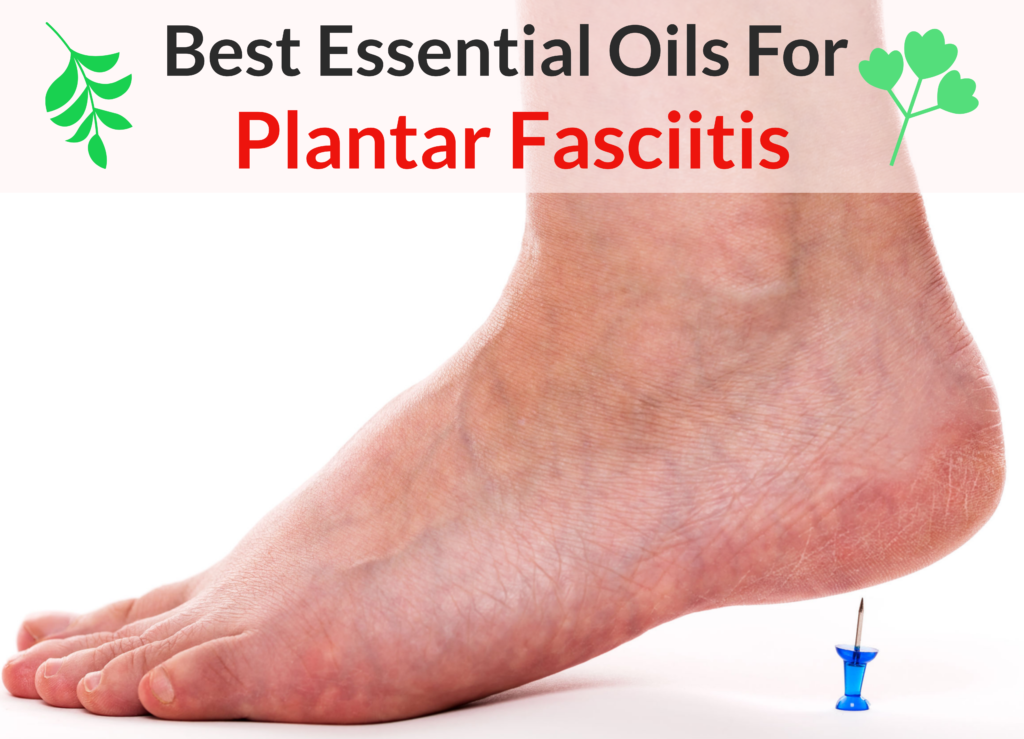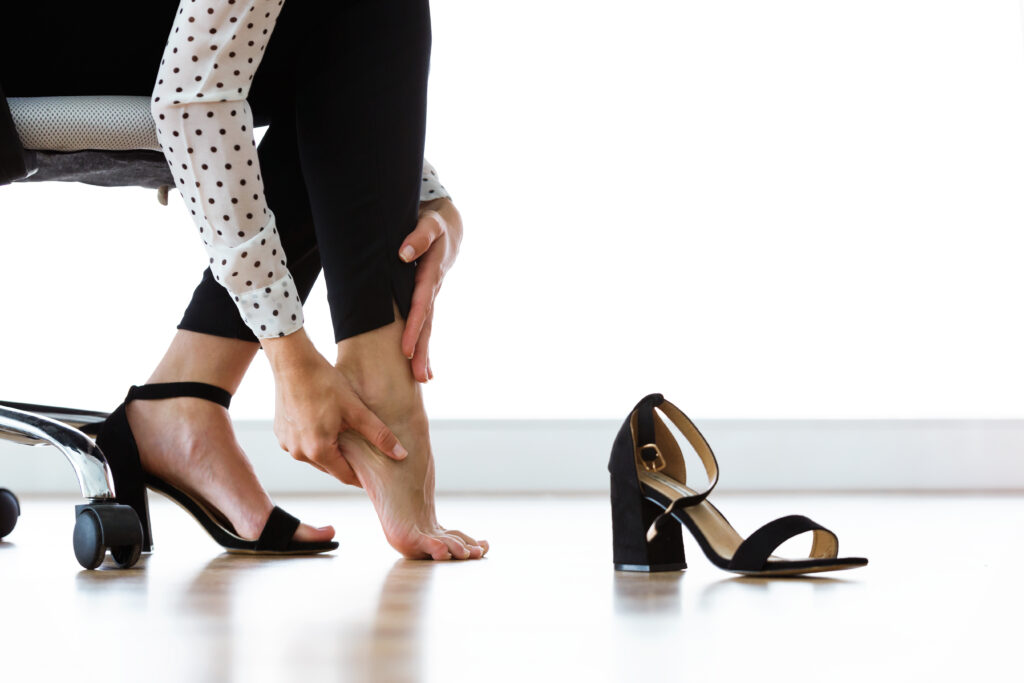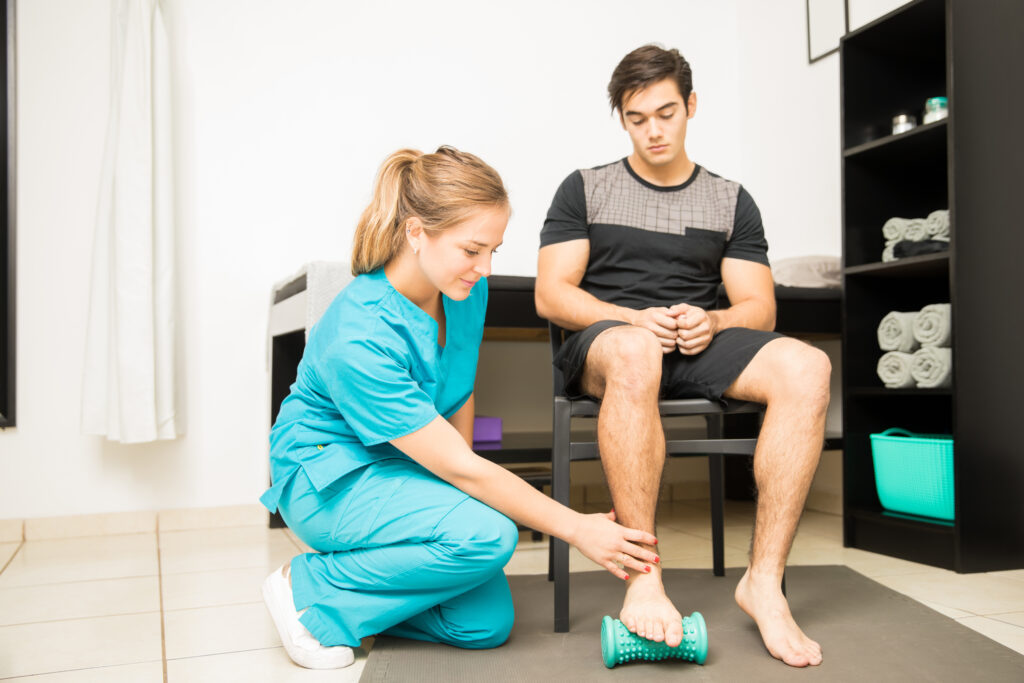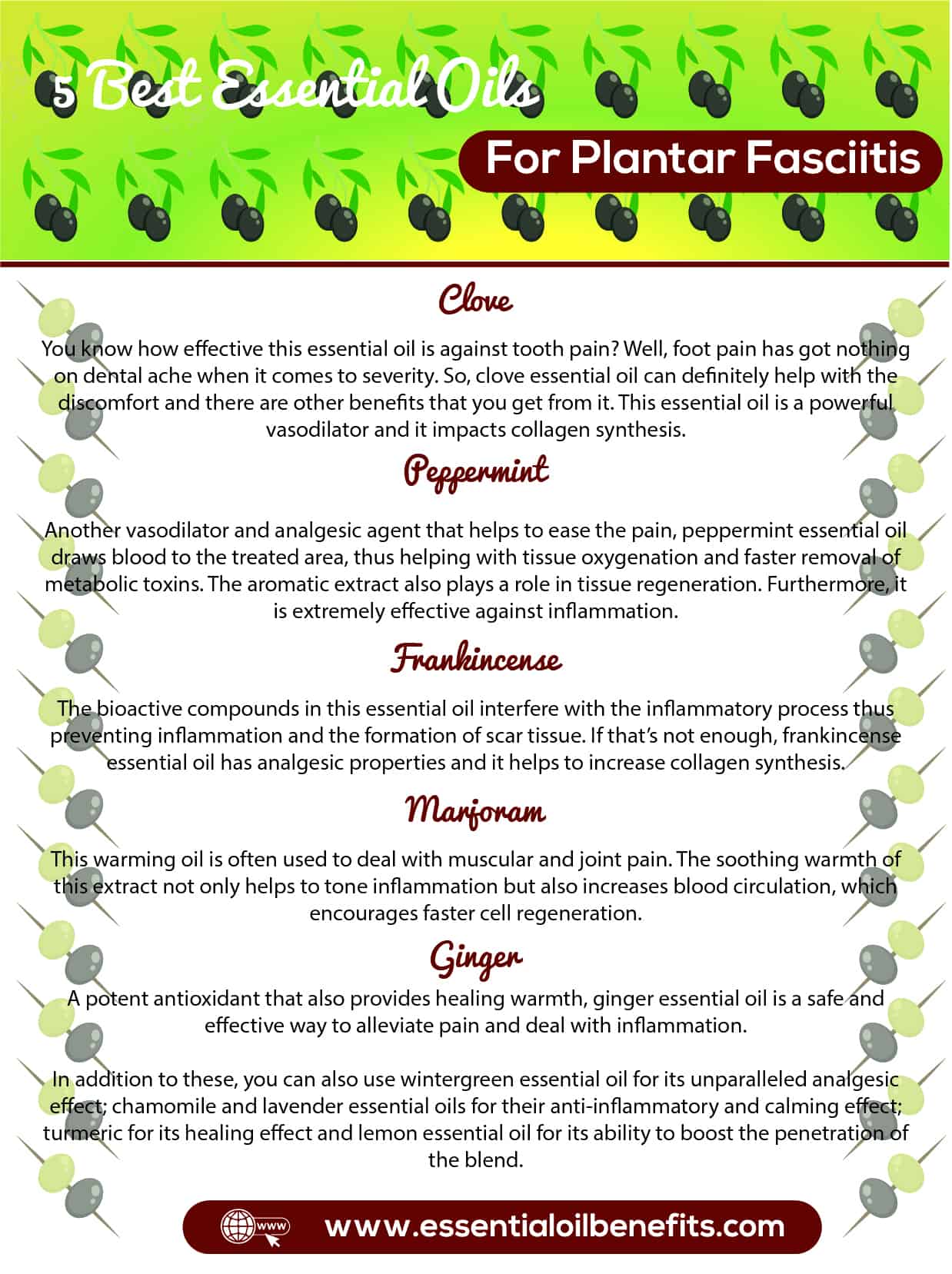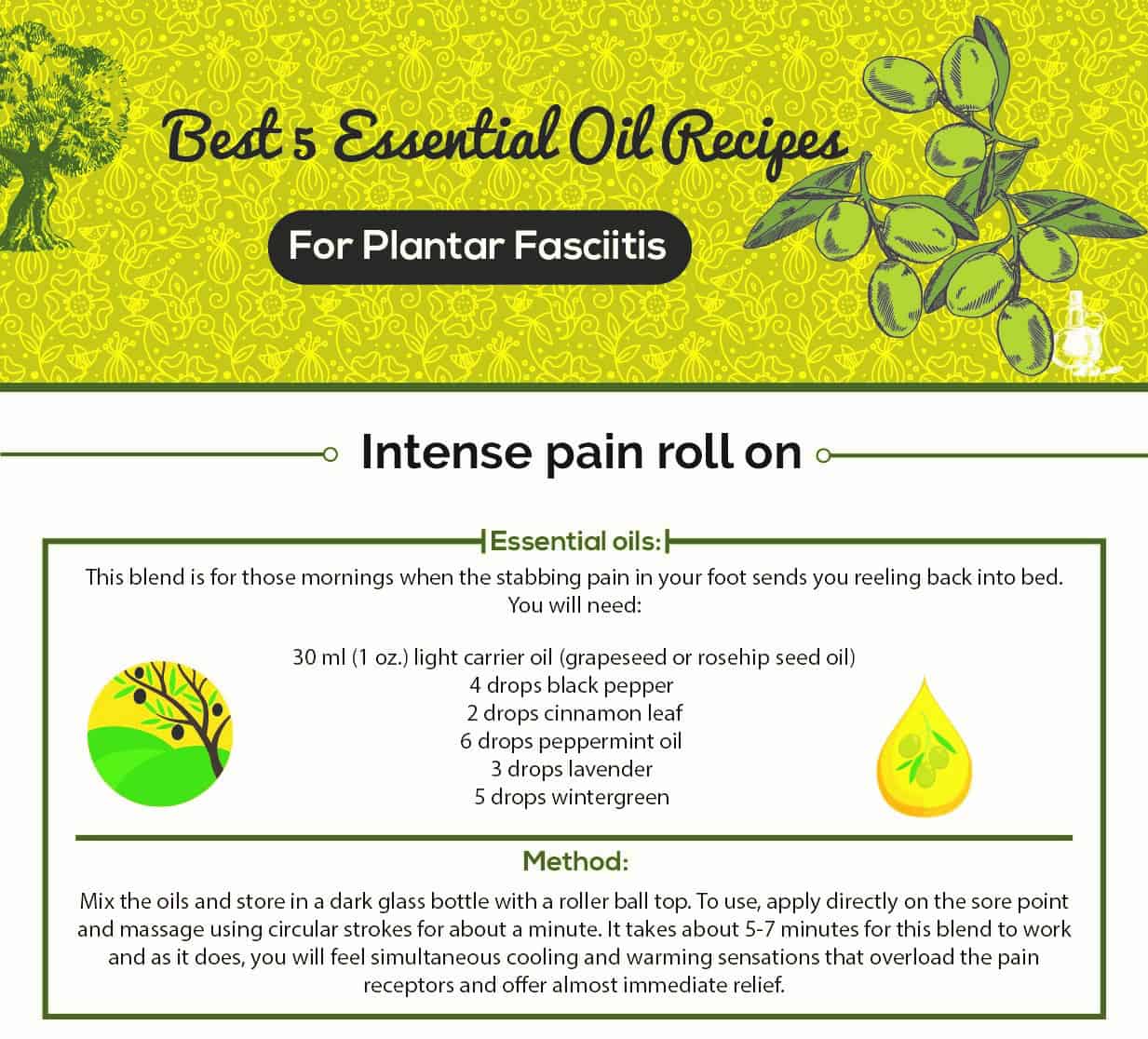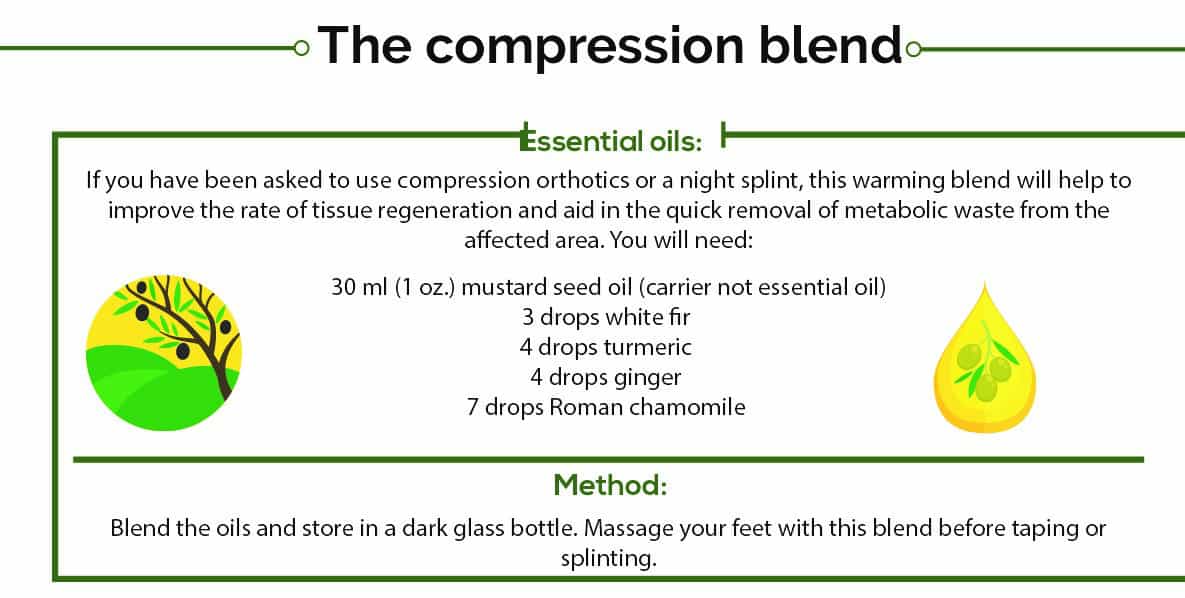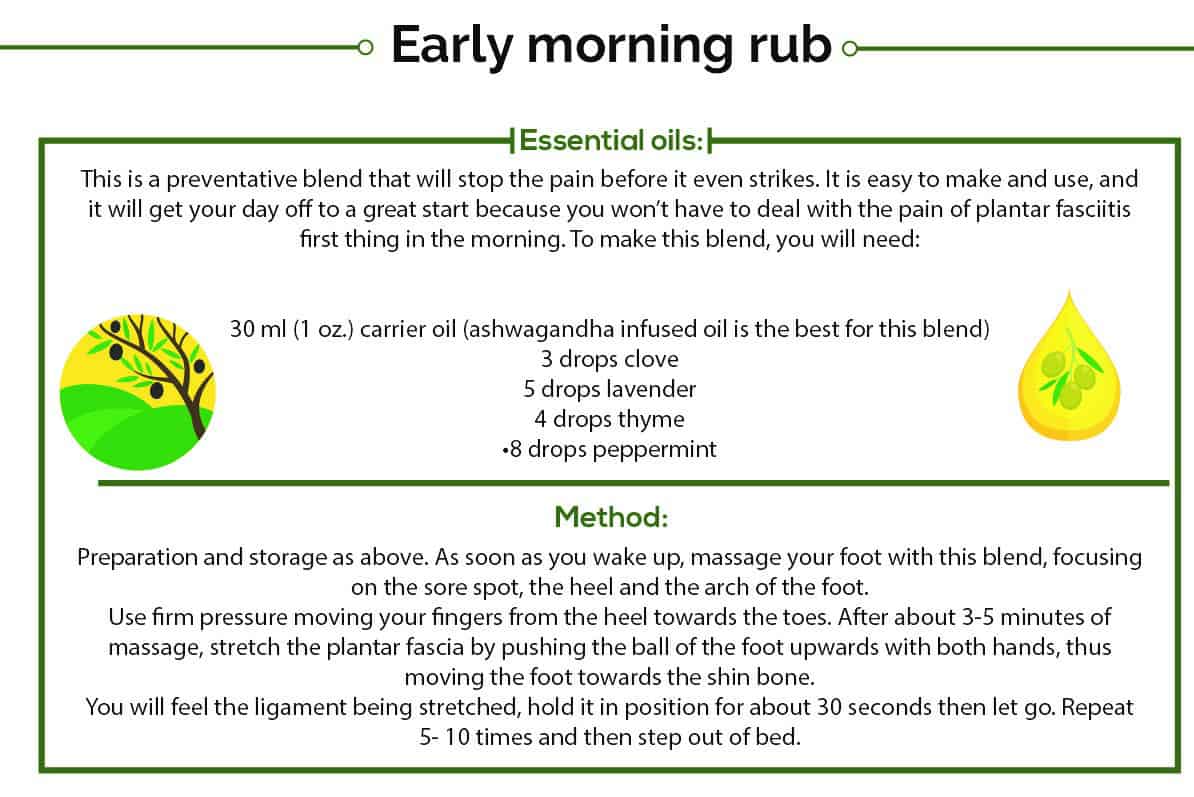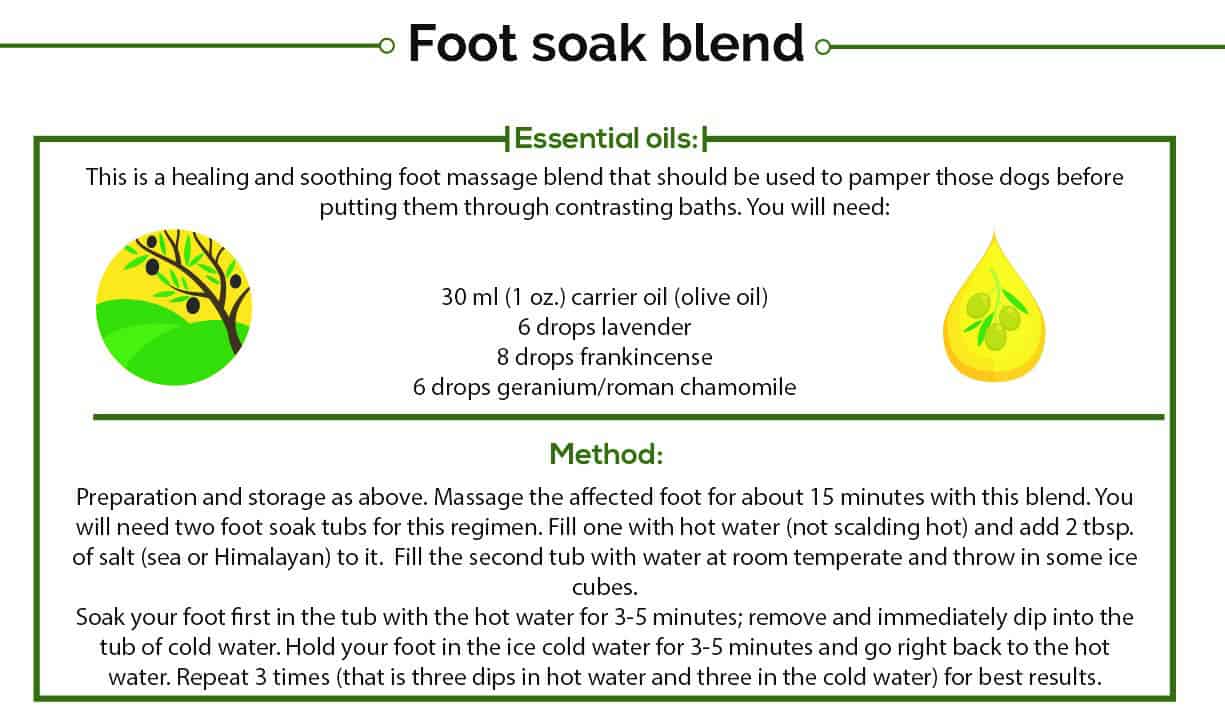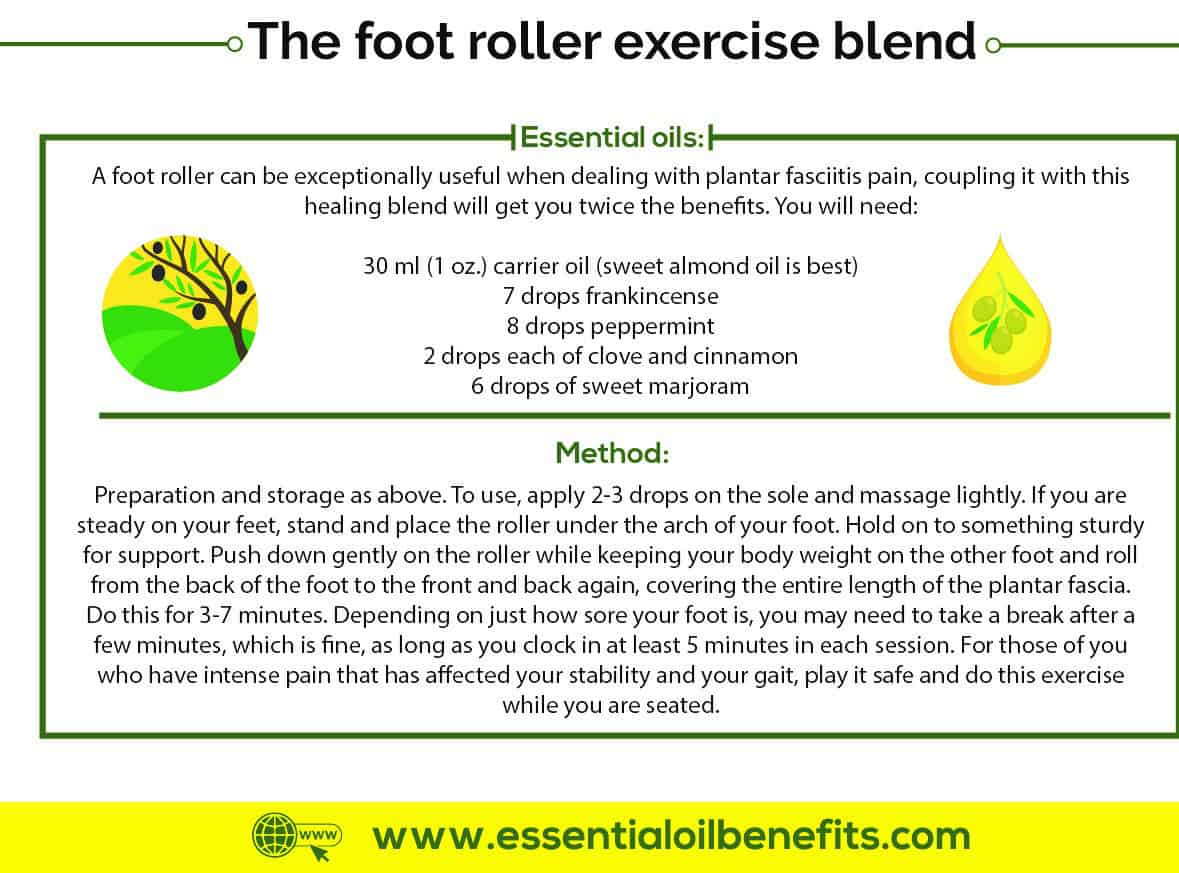Every year, nearly 1 million people in the country seek medical help for a painful foot condition known as plantar fasciitis. In fact, it is one of the most common feet related ailments, with as many 10-15% of the people in the age group of 40-60 years suffering from it.
If you have stabbing foot pain, chances are that plantar fasciitis is to be blamed for it as it accounts for nearly 80% of all podiatric pain complaints.
Despite all of this, the condition remains woefully misunderstood. Unfortunately, you can always count on the internet to add to the confusion. Page after page of what seems like pertinent information has been churned out on the topic.
Bloggers have devoted a lot of words to inform their readers about how inflammation is the root cause of plantar fasciitis. The propagation of this myth has understandably provided the impetus to write about all those herbs and oils that can cure the condition because they work so well against inflammation.
But there is one teeny-tiny problem – Plantar fasciitis has got nothing to do with inflammation. In fact, it is a non-inflammatory degenerative issue; so much so that they have decided to change the name of the ailment because the suffix “itis” is used for inflammatory conditions, which this one isn’t.
To cut a long story short, you may get some pain relief from the essential oil blends and the herbs prescribed on these sites but the problem is going to stay put. And the last thing you want is for this condition to turn chronic.
So folks, here I am with another offering from my “myth buster” series. If your feet have been giving you grief every morning, put those tired trotters up and let’s talk about how to soothe dem troubled dogs the right way.
If It’s Not Inflammation, What Exactly Is Plantar Fasciitis?
You know what happens to joints when you overstress them with repetitive movement? Yes, wear and tear that leads to cartilage damage. Well, this is a similar condition with the difference that it’s not the cartilage but a ligament that gets damaged in this case.
To understand how that happens, you’ll need to know a bit more about the plantar fascia. In the simplest terms, this is a ligament or a thick band of fibrous tissue that joins your heel bone to the joints at the base of your toes, and as such, you could say that it runs the entire length of your foot.
Your feet are a true marvel of structural design and mechanical engineering:
Comprising of 26 bones, 30 joints, which accounts for nearly one quarter of all the bones in the human body, and 100 tendons, muscles and ligaments, those dogs take on as much weight and strain as a loaded cement truck in a day’s work.
And guess what holds all those skeletal structures together and helps to turn them into one unit that literally keeps you up and about? Yes, the ligament called plantar fascia. So, as you walk, stand, run and work, this ligament is subjected to both tensile and compressive force/stress.
The plantar fascia and their woes:
Since not using your feet is simply not an option, wear and tear is to be expected and the thick and elastic band that is the plantar fascia is designed to put up with most of it.
However, when you consider the insult that these ligaments are subjected to, it is understandable that dishing out any more at them is bound to create trouble. So, it all starts with micro tears that may result from a host of factors; that is coming up in a bit.
The tears cause marginal inflammation and tenderness. Because the discomfort isn’t unbearable, most people simply resort to OTC painkillers or any topical analgesic preparation to ease the pain. These approaches offer temporary reprieve, which means that at best they are just a patch. But that isn’t the worst of it!
The prime issue is that these treatment modalities end up hiding the problem, offering a sense of well-being at a stage when seeking help would actually prevent the issue from progressing. At this point, you are still dealing with acute plantar fasciitis, which can easily be treated.
You are looking at a downhill ride from thereon:
Pain pills block not only the discomfort but also the SOS message that your body is sending to you. In this case, the pain subsides temporarily, but the constant damage eventually impacts the ability of the tissue to regenerate itself.
In time, things get so bad that there is significant formation of scar tissue to the point where the plantar fascia thickens and loses its elasticity.
This is what is known as chronic plantar fasciitis! As you may have guessed, this condition is harder to treat than the acute plantar fasciitis. But if you don’t pay heed to the damage and its effects, after a while the tissue starts to die (necrosis) and you get to a nearly irreparable stage, which is known plantar fasciosis.
They get very little nutrition:
To compound the problems caused by strain, these ligaments get very little by way of nutrition. In fact, they aren’t too well served by the circulatory network.
Since you literally step on them, the blood flow gets further compromised. This combination of structural damage and paucity of nutrition significantly increases the rate of cellular death.
These dead cells form a layer and add to the thickness of the fascia, much like what happens in case of bunions or calluses. The accumulation of layers of dead cells not only reduces elasticity of the band but also impacts the structure of the fat deposits that are meant to hydrate the tissue, and this further increases the circulatory problems in the area.
What Causes Plantar Fasciitis?
There are scores of factors that increase your risk of suffering from plantar fasciitis, but none of them can be termed as the universal root cause of the condition.
In fact, if you look closely, you will find contrasting factors leading to the condition. So, I’d say anything that puts unnatural strain on these ligaments will eventually compromise their structural integrity. But common risk factors include:
1. Running
Almost 10% of all runners suffer from the condition, and by now you probably know why.
2. Ballet and other physical activities
Any form of dance, sport or physical activity that puts strain on the feet will eventually lead to tissue damage.
3. A lot of time spent on your feet
Even when you are not moving about, a lot of time spent standing can do your feet just as much damage. Similarly, if your work requires you to spend most of your time on your feet, the plantar fascia ligaments are bound to suffer.
4. Age
As you get older, your body’s natural ability to regenerate damaged tissue deteriorates, which can compound an existing problem with the plantar fascia or even create it. This explains why people in the age group of 40-60 years have the highest risk of suffering from this ailment.
5. Gender
Women have thinner plantar fascia ligament then men; a thinner band equates to greater damage when stressed. Moreover, the fairer sex does have a penchant for feet torture, read high heel shoes. Yes, those pumps do their bit to exert tensile stress on the plantar fascia.
6. Weight
This is a no brainer. Even when your weight is perfectly in proportion to your height, these ligaments are put through a lot, so imagine what a couple of extra pounds do to them. So, it is no wonder that obesity is the culprit in nearly 70% cases of plantar fasciitis.
7. Flat feet
In normally arched feet, at least a part of the ligament is spared the compression force as it stays above the ground. But if you have flat feet or if the arch collapses due to repeated strain, the ligaments get subjected to increased tensile and compression stress.
8. Higher than normal arch
Think of your foot as a bow and the plantar fascia as the string that connects both ends. A higher than normal arch means that your heel and the ball of the foot, the two points where the ligament connects with the bones take all the weight of your body. High compression stress leads to greater wear and tear.
9. Foot roll
If you roll your feet inward or outward as you walk, these movements can exert undue stress on the plantar fascia and increase your risk of suffering from plantar fasciitis. If your shoes tend to wear on the inside edge, you are probably pronating. If the wear is in the front and the back of the shoe, your gait is normal and if your shoes tend to wear on the outer edge, you are possibly supinating.
10. Wrong footwear choice
Wearing shoes that are too tight or lack adequate padding to support your feet type can also exert strain on the plantar fascia, as can walking around barefoot, particularly on a hard floor.
11. Health problems
Any structural issue with your legs or hips is bound to impact your gait and the amount of pressure exerted on the feet. So, stiff calf muscles, hip problems, ankylosing spondylitis and arthritis will increase your risk of suffering from plantar fasciitis.
12. Injury
A sudden injury to the foot or an activity that involves repeated jumping or foot stomping, like basketball, skipping, gymnastics, tennis and others, can also cause trouble.
Is That Foot Pain Plantar Fasciitis Or Something Else?
Plantar fasciitis often gets misdiagnosed, blame it on the fact that there still isn’t a clear consensus on what causes the condition.
So, every doctor/podiatrist has his/her own theory on the matter. Here are a few ways in which you can know if plantar fasciitis is bothering you.
Clinical diagnosis
It was recently found that the thickening of the plantar fascia is a fairly good indication of the prevalence of plantar fasciitis. So, a simple ultrasound or MRI should be able to offer a clear diagnosis of the condition.
Home-diagnosis
Plantar fasciitis pain is usually at its most intense the first thing in the morning. If those first few steps, as you get out of bed, bring searing/stabbing pain, you may be dealing with plantar fasciitis.
At least in the initial stage, the pain is localized to a particular area instead of the whole foot. Also, this kind of pain is usually felt in one foot. If the foot pain subsides partially or completely after you walk around a bit but comes back with continued stress, you may be dealing with plantar fasciitis.
People who suffer from the condition usually have a problem with dorsiflexion or bending their foot towards the shin bone. If such a movement causes pain, you are likely dealing with plantar fasciitis.
What plantar fasciitis is not
If the pain starts in the buttocks or in the knees and radiates down to the heel, the plantar fascia may not be responsible for it.
Similarly, if the pain is felt more as a tingling/burning discomfort than a sharp jolt-like stabbing sensation, it may not be linked to the plantar fascia.
Also, pain that is predominantly felt at night/through the night but resolves itself by morning only to return at the end of the day, is not attributed to this condition.
The Symptoms Of Plantar Fasciitis
- Initially, the pain may feel like you have a pebble stuck in your shoes or have a wound on your sole that you are stepping on.
- It is felt after a few hours of inactivity, as well as after strenuous activity that puts considerable pressure on the feet.
- So, you are likely to feel pain in the morning as soon as you try to take your first step out of bed. You will also feel the discomfort if you have spent an hour or more in one position, whether sitting or standing.
- After about 15-30 minutes of walking, there is a significant decrease in the intensity of the pain. In fact, the discomfort may disappear completely.
- But, it will usually make a comeback in the afternoon hours or towards the end of the day and will increase steadily in intensity till you retire for the night.
- You won’t feel any pain as you sleep.
- Plantar fasciitis seldom cause outward signs of inflammation but your sole may feel warm and tender. Also, pressing the heel gently with the thumbs will usually elicit pain.
Should You See A Doctor For Your Foot Pain?
Oh yes! You definitely should because the right diagnosis is crucial if you want to treat any health problem.
Plantar fasciitis may take months or even years to progress depending on the cause of the condition. However, as you get to the point of tissue necrosis or scar tissue buildup, the structural instability caused by the problem also begins to impact other skeletal components.
So, the pain will increase in terms of severity and coverage area as the condition deteriorates. Eventually, it will move beyond the feet and impact the ankles, the knees and even the hip joint. The muscles will also get involved, particularly the calf muscles and when all of that happens, you can’t expect the spine to be spared. Hence, the pain will, over time, radiate upwards to the lower back.
Unfortunately, once you go from chronic plantar fasciitis to plantar fasciosis, it can get nearly impossible to treat the condition without surgery. So, save yourself all that trouble and get your foot pain diagnosed instead of relying on pain meds.
How Is Plantar Fasciitis Treated?
1. Nonsurgical
These modalities are typically used as the first line of treatment and involve pain relief and the correction of structural instability. This is how things will be handled in the beginning:
- You will be prescribed painkillers, rarely anything stronger than OTC anti-inflammatory drugs like ibuprofen or ketoprofen.
- Your doctor may also recommend the use of insoles or feet pads that soften the impact of movement. Additionally, strapping or taping of the foot may be advised. This lends support to the ligament and reduces the strain on them. Taping and strapping are found to help in almost 50% of all plantar fasciitis cases.
- You may also be asked to wear a night splint that basically keeps things in place as you sleep. A night splint does help some if the pain is at its most intense in the morning.
- Customized orthotics may be prescribed although these seldom offer relief from the pain and the strain. Also, they happen to be fairly expensive.
- Depending on the extent of damage to the plantar fascia, you may be asked to wear a removable walking cast. The idea is to keep your weight off the affected foot and the cast does help in this respect. But, there is always the risk of going right back to square one once you stop using the cast. Plus, let’s not forget that when you take the weight off of one foot, the other foot has to bear the brunt of it all.
- Physiotherapy is almost always recommended. Exercises and other forms of physical therapy do offer relief from the pain and often also the underlying cause of plantar fasciitis.
2. Noninvasive or minimally invasive
These treatment options are next in line if those mentioned above don’t work. As you may have guessed, they tend to be harder on the pocket. However, in terms of relief, they rarely offer more than the modalities discussed above. These include:
Steroid injections
This is possibly the most common type of treatment to deal with any kind of ligament or muscular inflammation. A corticosteroid is injected directly into the affected area. It offers some amount of relief from the pain and the inflammation when you are dealing with acute and even chronic plantar fasciitis.
However, the effects are often short-lived, so about 6 months down the line the discomfort will come rolling back into your life. Unfortunately, this is not the type of treatment that can be continued indefinitely. Moreover, side effects include tendon weakening, greater susceptibility to infections and thinning of the bones close to the site of administration.
Ultrasound therapy
As the name suggests, sound waves are used to target the inflammation and the scar tissue in this form of treatment. However, this has to be done from the inside. So, a few small cuts are made to insert the probe. This is usually done under local anesthesia.
Intracorporeal pneumatic shock therapy (IPST)
In terms of how it works, IPST is no different from ultrasound therapy. So, a few tiny cuts will still have to be made but this time, the probe actually delivers shocks to the affected tissue. Yes, you will be thankful for the local anesthesia.
The good news is that ISPT helps to remove heel spurs. The bad news is that heel spurs are a result of plantar fasciitis and not the cause of the condition. Moreover, they cannot be implicated for the pain.
Radiation therapy
Yes, this is the therapy used in cancer treatment, but they tone down the juice for the feet. So, it’s more like brief exposure to X-ray and there is no pain involved. However, it’s a hit or miss sort of thing and the effects may not be permanent. On the plus, side, it is at the lower end of the price spectrum.
3. Surgery
I suppose this one is self-explanatory. They go in to get the necrotic/scarred tissue out. It is quite expensive at $10,000 and you run the risk of all the side effects of surgery.
The biggest problem is that it may compromise the structural integrity of the foot or may cause nerve damage and that can cause more trouble than what you started with. Furthermore, there can be considerable downtime. So, it is reserved as the last resort for when all else fails.
Can Essential Oils Help With Plantar Fasciitis?
From the looks of it, this seems like a stubborn condition that can be hard to deal with. So, I am sure you are wondering if a few oils can actually make a massive difference. I know this is going to sound like me tooting my essential oil trumpet again. But hey, even I can’t deny the facts when they are so obvious. Take a look at exactly how these oils work:
- They are literally the most effective when it comes to controlling inflammation. So, when that foot pain is in its acute stage, this is the point at which essential oils can actually stop the condition from taking a turn for the worse.
- They deal with the pain without hurting you. So, these aromatic extracts give you the motivation that you will, no doubt, need to stick with any exercise regimen that is meant to stretch the ligament and increase collagen synthesis.
- The oils actually help to increase collagen synthesis, particularly that of collagen 1, which is the protein that this ligament is made of.
- Above all, the oils are really potent vasodilators. Since the lack of blood increases the trouble for the plantar fascia, diverting more blood to the area can help to supply much needed nutrition and result in faster and proper healing. So, this property helps against scar tissue formation as well as tissue necrosis.
Suffering from foot pain due to plantar fasciitis…look no further. The L’orpur Pain Relief Blend will tackle all your pain points and more!
The Best 5 Essential Oils For Plantar Fasciitis
1. Clove
You know how effective this essential oil is against tooth pain? Well, foot pain has got nothing on dental ache when it comes to severity.
So, clove essential oil can definitely help with the discomfort and there are other benefits that you get from it. This essential oil is a powerful vasodilator and it impacts collagen synthesis. So, I’d say that you are getting not twice but thrice the bang for your buck.
2. Peppermint
Another vasodilator and analgesic agent that helps to ease the pain, peppermint essential oil draws blood to the treated area, thus helping with tissue oxygenation and faster removal of metabolic toxins.
The aromatic extract also plays a role in tissue regeneration. Furthermore, it is extremely effective against inflammation.
3. Frankincense
The bioactive compounds in this essential oil interfere with the inflammatory process thus preventing inflammation and the formation of scar tissue. If that’s not enough, frankincense essential oil has analgesic properties and it helps to increase collagen synthesis.
4. Marjoram
This warming oil is often used to deal with muscular and joint pain. The soothing warmth of this extract not only helps to tone inflammation but also increases blood circulation, which encourages faster cell regeneration.
5. Ginger
A potent antioxidant that also provides healing warmth, ginger essential oil is a safe and effective way to alleviate pain and deal with inflammation.
In addition to these, we will also use wintergreen essential oil for its unparalleled analgesic effect; chamomile and lavender essential oils for their anti-inflammatory and calming effect; turmeric for its healing effect and lemon essential oil for its ability to boost the penetration of the blend.
The Best Essential Oil Recipes For Plantar Fasciitis
1. Intense pain roll on
This blend is for those mornings when the stabbing pain in your foot sends you reeling back into bed. You will need:
- 30 ml (1 oz.) light carrier oil (grapeseed or rosehip seed oil)
- 4 drops black pepper
- 2 drops cinnamon leaf
- 6 drops peppermint oil
- 3 drops lavender
- 5 drops wintergreen
Method:
Mix the oils and store in a dark glass bottle with a roller ball top. To use, apply directly on the sore point and massage using circular strokes for about a minute. It takes about 5-7 minutes for this blend to work and as it does, you will feel simultaneous cooling and warming sensations that overload the pain receptors and offer almost immediate relief.
This blend is not for everyday use and should be reserved only for when the pain is intense. Do not use wintergreen oil if you are pregnant or breastfeeding, are allergic to aspirin, are on blood thinning medication, or suffer from liver/kidney problems.
2. The compression blend
If you have been asked to use compression orthotics or a night splint, this warming blend will help to improve the rate of tissue regeneration and aid in the quick removal of metabolic waste from the affected area. You will need:
- 30 ml (1 oz.) mustard seed oil (carrier not essential oil)
- 3 drops white fir
- 4 drops turmeric
- 4 drops ginger
- 7 drops Roman chamomile
Method:
Blend the oils and store in a dark glass bottle. Massage your feet with this blend before taping or splinting.
3. Early morning rub
This is a preventative blend that will stop the pain before it even strikes. It is easy to make and use, and it will get your day off to a great start because you won’t have to deal with the pain of plantar fasciitis first thing in the morning. To make this blend, you will need:
- 30 ml (1 oz.) carrier oil (ashwagandha infused oil is the best for this blend)
- 3 drops clove
- 5 drops lavender
- 4 drops thyme
- 8 drops peppermint
Method:
Preparation and storage as above. As soon as you wake up, massage your foot with this blend, focusing on the sore spot, the heel and the arch of the foot. Use firm pressure moving your fingers from the heel towards the toes. After about 3-5 minutes of massage, stretch the plantar fascia by pushing the ball of the foot upwards with both hands, thus moving the foot towards the shin bone.
You will feel the ligament being stretched, hold it in position for about 30 seconds then let go. Repeat 5- 10 times and then step out of bed.
4. Foot soak blend
This is a healing and soothing foot massage blend that should be used to pamper those dogs before putting them through contrasting baths. You will need:
- 30 ml (1 oz.) carrier oil (olive oil)
- 6 drops lavender
- 8 drops frankincense
- 6 drops geranium/roman chamomile
Method:
Preparation and storage as above. Massage the affected foot for about 15 minutes with this blend. You will need two foot soak tubs for this regimen. Fill one with hot water (not scalding hot) and add 2 tbsp. of salt (sea or Himalayan) to it. Fill the second tub with water at room temperate and throw in some ice cubes.
Soak your foot first in the tub with the hot water for 3-5 minutes; remove and immediately dip into the tub of cold water. Hold your foot in the ice cold water for 3-5 minutes and go right back to the hot water. Repeat 3 times (that is three dips in hot water and three in the cold water) for best results.
5. The foot roller exercise blend
A foot roller can be exceptionally useful when dealing with plantar fasciitis pain, coupling it with this healing blend will get you twice the benefits. You will need:
- 30 ml (1 oz.) carrier oil (sweet almond oil is best)
- 7 drops frankincense
- 8 drops peppermint
- 2 drops each of clove and cinnamon
- 6 drops of sweet marjoram
Method:
Preparation and storage as above. To use, apply 2-3 drops on the sole and massage lightly. If you are steady on your feet, stand and place the roller under the arch of your foot. Hold on to something sturdy for support. Push down gently on the roller while keeping your body weight on the other foot and roll from the back of the foot to the front and back again, covering the entire length of the plantar fascia.
Do this for 3-7 minutes. Depending on just how sore your foot is, you may need to take a break after a few minutes, which is fine, as long as you clock in at least 5 minutes in each session. For those of you who have intense pain that has affected your stability and your gait, play it safe and do this exercise while you are seated.
And in conclusion…
Like all other health problems, plantar fasciitis too is best prevented than cured. And if you act fast, you won’t have a big problem preventing the condition. I guarantee that essential oils will help you every step of the way when preventing and treating plantar fasciitis.
The best part is that these blends can be used with all other forms of treatment, without adverse reactions and side effects.
So, start using them as soon as foot pain saunters into your life because you will need happy feet and not achy feet to get through the trials of life! On that note, here is wishing you all a life free of foot pain!

